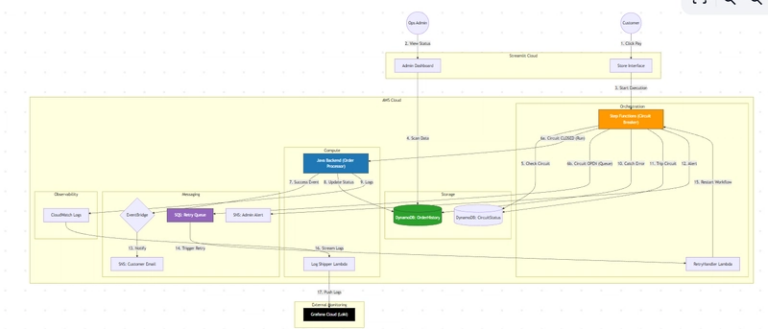The Power of HTML – Part 5: Accessibility Unleashed: Inclusive Design with HTML
Hey there, HTML heroes! ♿ If you’ve been rocking our The Power of HTML series, you’ve nailed intros (Part 1), semantics (Part 2), forms (Part 3), and multimedia (Part 4). Now, in Part 5, we’re shining a light on accessibility (a11y)—making your HTML inclusive so everyone, regardless of ability, can enjoy the web. In 2025, accessibility isn’t a “nice-to-have”; it’s essential for ethics, SEO, and legal compliance (think WCAG and ADA).
HTML provides built-in tools for a11y, and AI like ChatGPT (great for everyday code gen) or Grok (awesome for detailed, optimized suggestions) can audit and fix issues fast. Prompt example: “Make this HTML accessible with ARIA roles.” Let’s unleash inclusive design!
Why Accessibility Matters in Modern Web Dev
Over 1 billion people worldwide have disabilities—your sites should work for them. Benefits:
- Broader Reach: Inclusive sites attract more users and rank higher.
- Legal Protection: Avoid lawsuits; accessibility is law in many places.
- Better UX for All: Features like alt text help everyone (e.g., slow connections).
- AI Assistance: Tools like WAVE or Lighthouse integrate with AI—ChatGPT for quick checks, Grok for in-depth fixes.
Stat: Accessible sites convert 20-30% better. HTML is the foundation—get it right here.
Core Accessibility Features in HTML
Start with semantics (from Part 2)—they’re a11y gold. Key elements:
-
Alt Text for Images:
<img alt="Descriptive text">—screen readers voice it. -
Labels for Forms:
<label for="id">pairs with inputs. -
Headings Hierarchy: Use
<h1>to<h6>logically for navigation. -
Landmarks: Semantic tags like
<main>,<nav>act as ARIA landmarks.
ARIA (Accessible Rich Internet Applications) enhances:
-
role="button": For custom controls. -
aria-label="Close": Hidden text for screen readers. -
aria-hidden="true": Hide decorative elements.
Avoid pitfalls: No empty alts on meaningful images; test with screen readers like NVDA.
Hands-On Example: An Accessible Navigation Menu
Build this semantic, accessible nav. Copy to accessible-nav.html:
<!DOCTYPE html>
<html lang="en">
<head>
<meta charset="UTF-8">
<meta name="viewport" content="width=device-width, initial-scale=1.0">
<title>Accessible Nav</title>
<style>
body { font-family: Arial, sans-serif; }
nav { background: #f0f0f0; padding: 1em; }
ul { list-style: none; padding: 0; }
li { display: inline; margin-right: 1em; }
a { text-decoration: none; color: #007bff; }
a:focus { outline: 2px solid #ff0; } /* Visible focus */
</style>
</head>
<body>
<header>
<h1>Accessible Site</h1>
</header>
<nav role="navigation" aria-label="Main menu">
<ul>
<li><a href="#home" aria-current="page">Home</a></li>
<li><a href="#about">About</a></li>
<li><a href="#contact">Contact</a></li>
</ul>
</nav>
<main id="home">
<p>Welcome! This nav is keyboard-navigable and screen-reader friendly.</p>
<img src="https://images.unsplash.com/photo-1593642532973-d31b6557fa68" alt="Diverse users accessing digital content on various devices">
</main>
</body>
</html>
Test: Tab through links—focus is visible. Screen readers announce “Main menu, link, Home, current page.”
AI-Powered Accessibility Checkers
Leverage AI for audits:
- Lighthouse: Built into Chrome DevTools—run audits, get a11y scores.
- WAVE Tool: Online checker highlights errors.
- AI Prompts: ChatGPT: “Audit this HTML for accessibility issues.” Grok: “Suggest ARIA improvements for better inclusivity.”
Example: Paste your code into ChatGPT or Grok—they flag missing alts or suggest tabindex.
Advanced: Use lang attributes for multilingual sites; ensure color contrast (tools like WebAIM Checker).
Common Pitfalls and Fixes
- Auto-Playing Media: Add controls and pause options.
-
Custom Controls: Always add ARIA states like
aria-expanded. - Testing: Use real users or simulators—don’t assume.
Exercise: Audit a site (yours or public) with Lighthouse. Fix one issue with HTML.
Key Takeaways and Preview
- HTML unlocks accessibility—use semantics, ARIA, and AI for inclusive wins.
- Tools like ChatGPT and Grok make auditing quick and effective.
- Next: Part 6—HTML5 APIs for storage, geolocation, and offline magic!
Like, share your a11y tips in comments, and follow for more! 🌍

